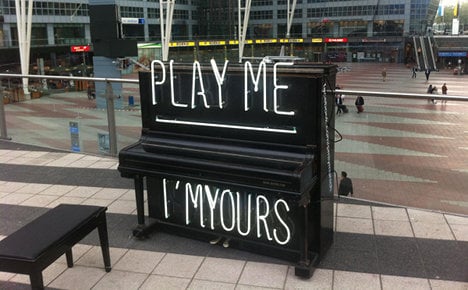Brainchild of British artist Luke Jerram, and brought to Munich with help from the German Music for Children association, “Play Me, I’m Yours” has set up pianos to the city’s parks, centre and even the airport.
After kicking off on Saturday with an ad-hoc concert from Munich-based indie band The Becqerels, the pianos have been gaining lots of attention, the Süddeutsche Zeitung newspaper reported on Monday. They will stay scattered around the city until 19th May.
There are no guidelines on what to play, or how to play it, meaning anyone is welcome to take a tinkle on the ivories. All the organisers hope, is that if it rains, people will pull over the instruments’ plastic covers.
Isabel Melendez Alba, chairwoman of Music for Children, told the paper that for the Munich leg of the installation, funding came from Munich administration’s culture department and donations from the Sparkasse bank’s culture foundation.
Pictures of some of the pianos
Yet there still remains a €4,000 fee from music royalties collection agency GEMA. “I hope I can find some more funding for that because if I have to use Music for Children money, then it’ll go bankrupt,” she added.
Some of the pianos are set up to be customised, meaning people can not only play them but also add their own personal touch. Others were designed by local community or music groups. Some will be auctioned off at the end of the project to raise money for the project and the rest will be donated to schools.
The “Play Me, I’m Yours” project has been running since 2008 and so far has visited 35 cities across the globe. This is the first time it has come to Germany. After Munich, pianos will grace the streets of Cleveland, Omaha then Boston, all in the US.
The Local/jcw



 Please whitelist us to continue reading.
Please whitelist us to continue reading.
Member comments